
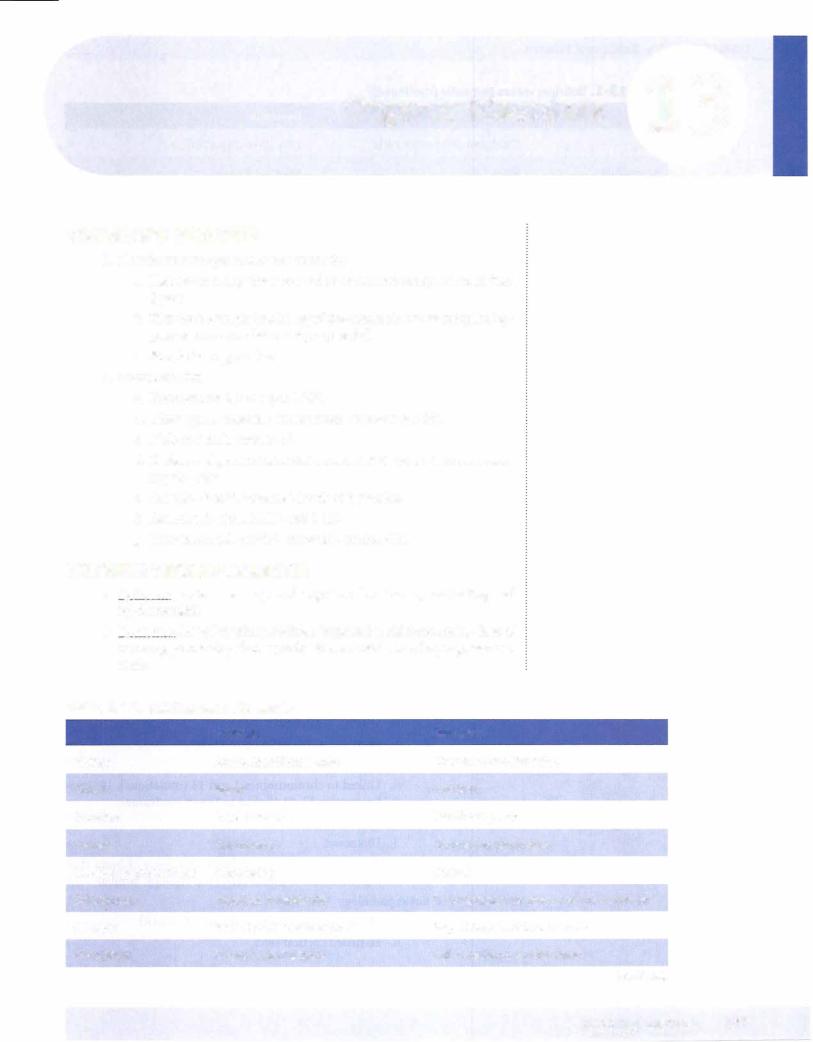
Organic Disorders 13
TOURETTE'S DISORDER
1. Definition: multiple motor and vocal tics
a.Tics occur many times every day or intermittently for more than 1 year.
b.Tics can be simple (rapid, repetitive contractions) or complex (ap pear as more ritualistic and purposeful).
c.Simple tics appear first.
2.Characteristics
a.Prevalence is 0.5 to 1 per 1,000.
b.Mean age ofonset is 7 (onset must be before age 18) .
c . Male to female ratio is 3:1.
d.Evidence ofgenetic transmission: about 50% concordance in mono- zygotic twins
e.Associated with increased levels of dopamine
f.Associated with ADHD and OCD.
g.Treatment: haloperidol, pimozide, or clonidine
DELIRIUM VERSUS DEMENTIA
1.Delirium: acute onset, impaired cognitive functioning, fluctuating and brief, reversible
2.Dementia: loss ofcognitive abilities, impaired social functioning, loss of memory, personality change; only 15% reversible; may be progressive or static
Table 13-1. Delirium versus Dementia |
|
|
|
Delirium |
Dementia |
History |
Acute, identifiable date |
Chronic, cannot be dated |
Onset |
Rapid |
Insidious |
Duration |
Days to weeks |
Months to years |
Course |
Fluctuating |
Chronically progressive |
Level of consciousness |
Fluctuating |
Normal |
Orientation |
Impaired periodically |
Disorientation to time -7 place -7 person |
Memory |
Recent markedly impaired |
Recent impaired then remote |
Perception |
Visual hallucinations |
Hallucinations, sundowning |
(continued)
MEDICAL |
167 |
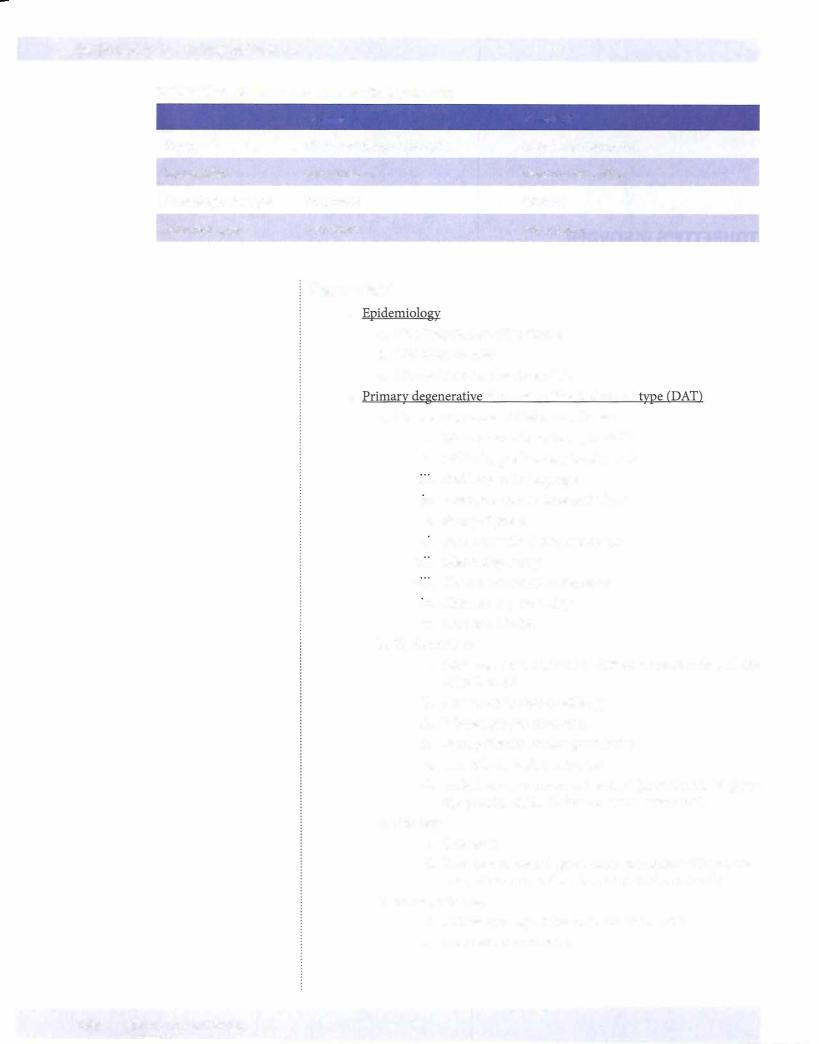
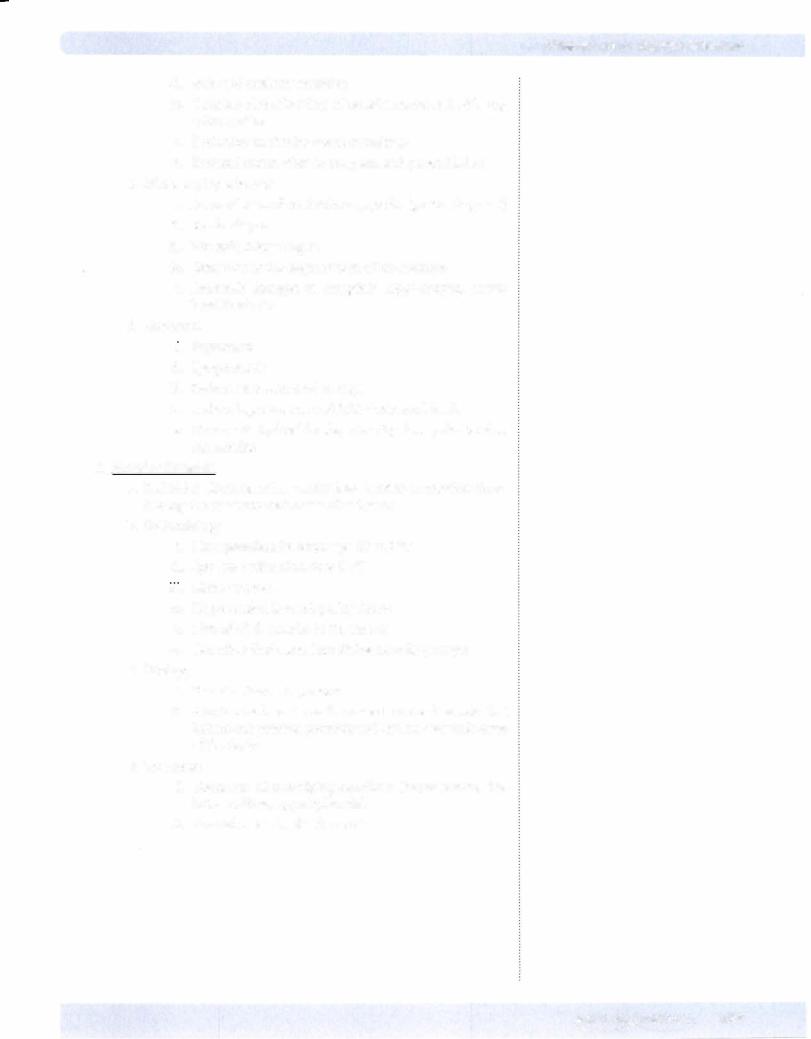
Chapter 13 • Organic Disorders
iii. Enlarged cerebral ventricles
IV. Deficient blood flow in parietal lobes correlated with cog nitive decline
v. Reduction in choline acetyl transferase
VI. Reduced metabolism in temporal and parietal lobes
e.Microscopic pathology
i.Accumulation of amyloid beta-peptides (protein fragment)
ii.Senile plaques
111.
IV.
Neurofibrillary tangles
Granulovascular degeneration of the neurons
v.Anatomic changes: to amygdala, hippocampus, cortex, basal forebrain
f.Treatment
L Supportive
IL Symptomatic
m. Reduce environmental changes
IV. Reduce hypertension and LDL cholesterol levels
v.Donepezil hydrochloride, rivastigmine, galantamine, memantine
3.Vascular dementia
a.Definition: decremental or patchy deterioration in cognitive func tioning due to severe cerebrovascular disease
b.Epidemiology
L Most prevalent between ages 60 and 70
IL
111.
IV.
Appears earlier than does DAT Men > women
Hypertension is predisposing factor
v.15% of alldementias in the elderly
vi.Can often find some lateralizing neurologic signs
c. Etiology
L Vascular disease is present.
IL Affects smalland medium-sized cerebral vessels that infarct and produce parenchymal lesions over wide areas of the brain
d. Treatment
LTreatment of underlying condition (hypertension, dia betes mellitus, hyperlipidemia)
11. General measures for dementia
MEDICAL 169



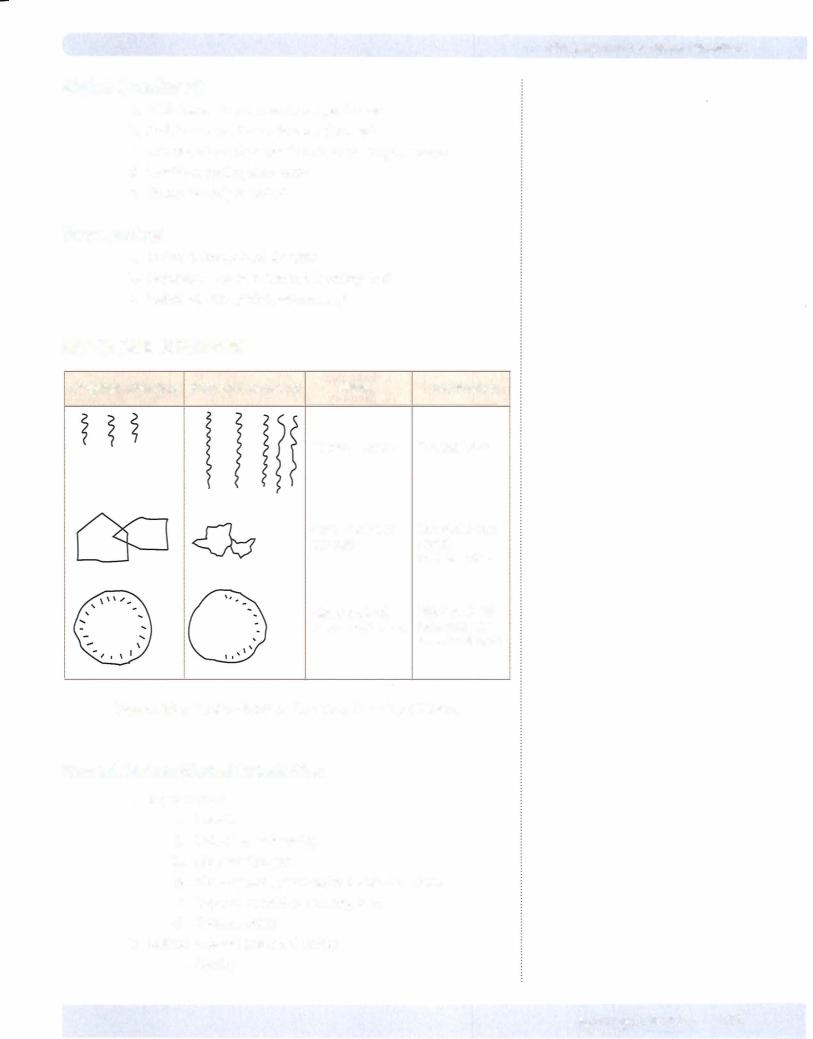
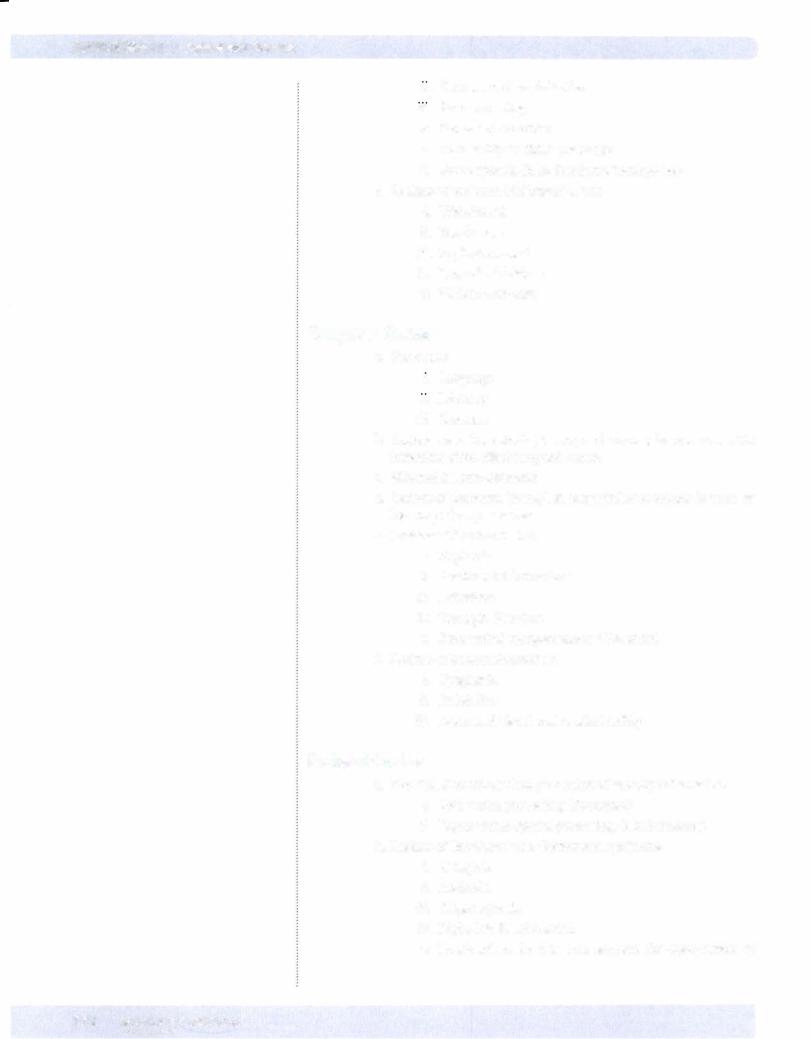
USM LE Step 1 • Behavioral Science
IL Decreased drive, initiative m. Poor grooming
Iv. Decreased attention
v.Poor ability to think abstractly
vi.Broca aphasia (if in dominant hemisphere) c. Lesions of orbitomedial frontal cortex
LWithdrawal
11.Fearfulness
111. |
Explosive mood |
Iv. |
Loss of inhibitions |
v. |
Violent outbursts |
Temporal Cortex
a. Functions
L Language
IL Memory
111.Emotion
b.Lesions stem from stroke, tumor, and trauma; herpes virus CNS infections often affect temporal cortex
c.Bilateral lesions: dementia
d.Lesions ofthe rostal (front) left temporal lobe: deficits in recall or learning of proper names
e.Lesions ofdominant lobe:
i. Euphoria
IL Auditory hallucinations m. Delusions
IV. Thought disorders
v.Poor verbal comprehension (Wernicke) f. Lesions ofnondominant lobe:
i.Dysphoria
11.Irritability
m. Decreased visual and musical ability
Parietal Cortex
a.Key function: intellectual processing of sensory information
i.Left: verbal processing (dominant)
ii.Right: visual-spatial processing (nondominant)
b.Lesions ofdominant lobe: Gerstmann syndrome
1.Agraphia
11.Acalculia
m. Finger agnosia
iv.Right-left disorientation
v.Dysfunctions in this area account for aproportion of
174 MEDICAL
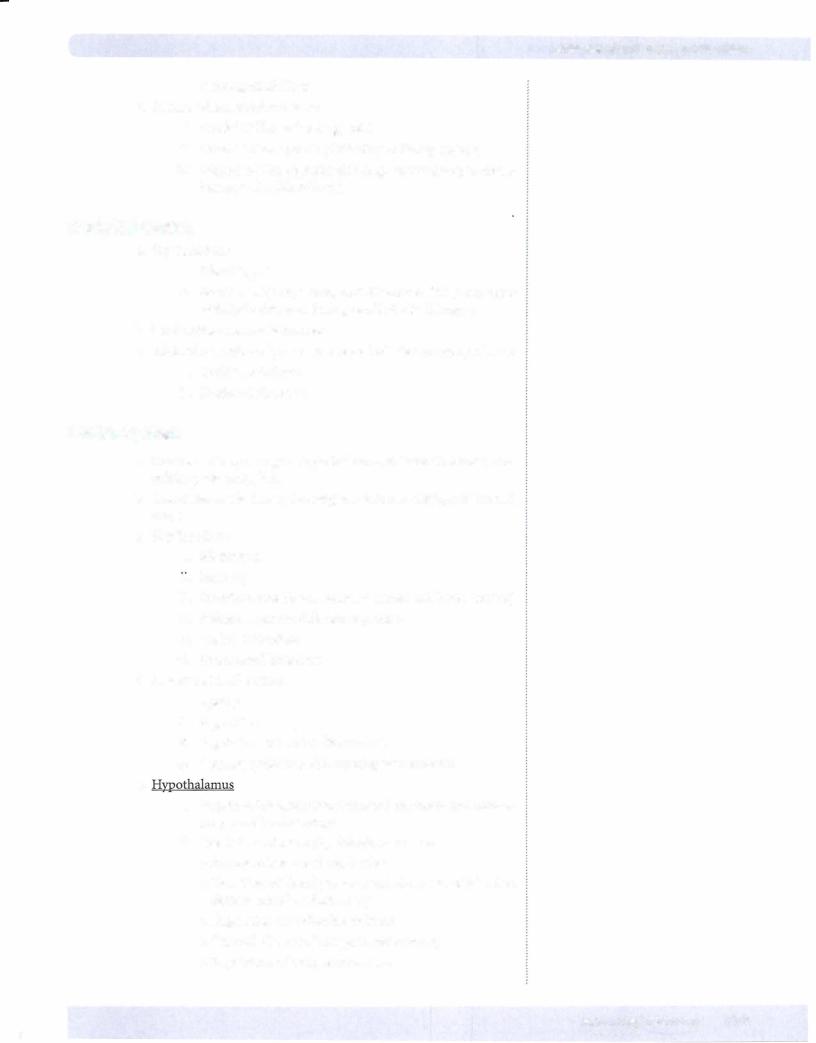
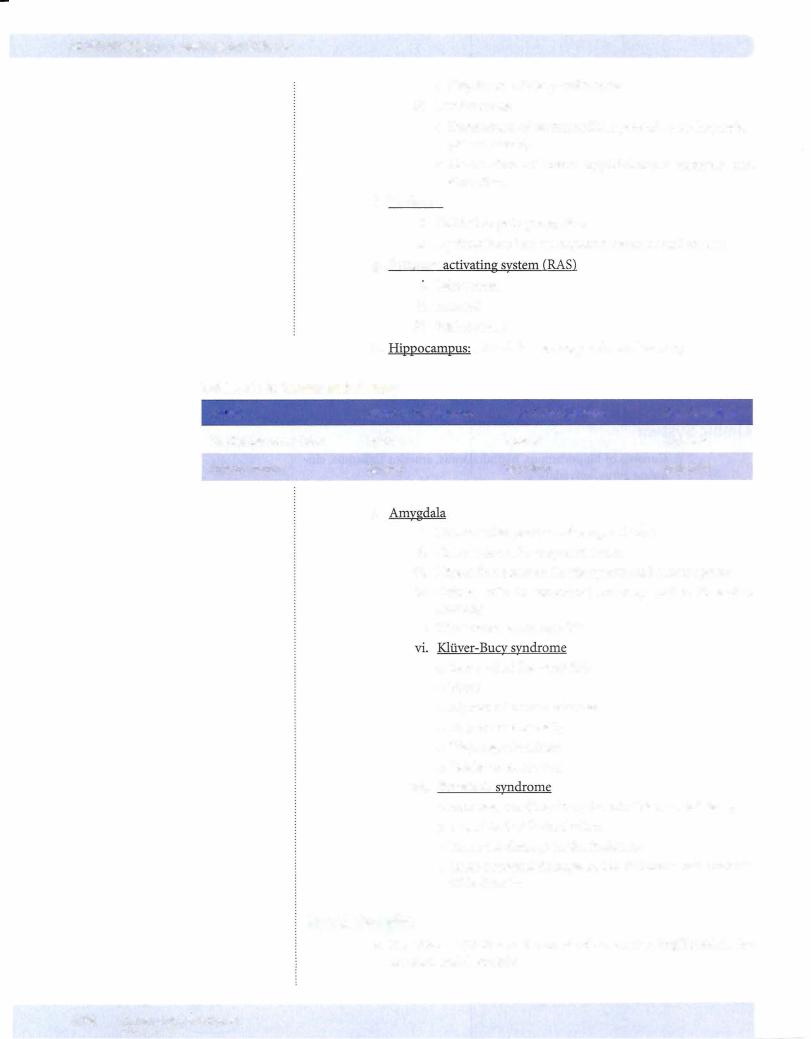
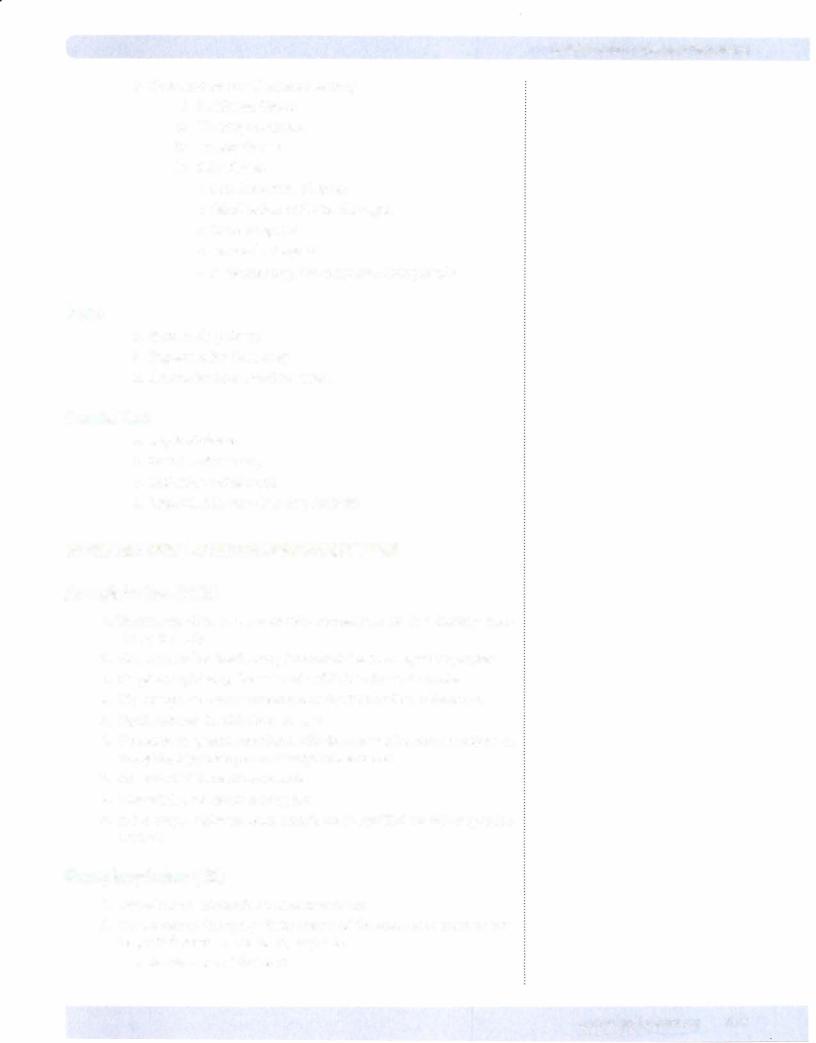
Chapter 13 • Organic Disorders
b.Dysfunctions (see Dementia section)
i.Parkinson disease
ii.Huntington chorea
iii.Wilson disease
iv.Fahr disease
•Rare hereditary disorder
•Calcification of the basal ganglia
•Onset at age 30
•Dementia at age 50
•Resembles negative symptom schizophrenia
Pons
a.Start ofNE pathway
b.Important for REM sleep
c.Anomolies here linked to autism
Cerebellum
a.Key for balance
b.Skill-based memory
c.Facilitates verbal recall
d.Implicated in some learning disabilities
BRIEF REVIEW OF NEUROTRANSMITTERS
Acetylcholine (ACh)
1.Neurotransmitter at nerve-muscle connections for all voluntary mus- cles ofthe body
2.Also many of the involuntary (autonomic) nervous system synapses
3.Despite long history, the exact role of ACh in the brain unclear
4.Cholinergic neurons concentrated in the RAS and basal forebrain
5.Significant role in Alzheimer disease
6.Dementia in general associated with decreased ACh concentrations in amygdala, hippocampus, and temporal neocortex
7.Associated with erections in males
8.Muscarinic and nicotinic receptors
9.In the corpus striatum, ACh circuits are in equilibrium with dopamine neurons.
Norepinephrine (NE)
1.One ofthe catecholamine neurotransmitters
2.Transmitter of the sympathetic nerves of the autonomic nervous sys tem, which mediate emergency response
a.Acceleration ofthe heart
MEDICAL 1 77
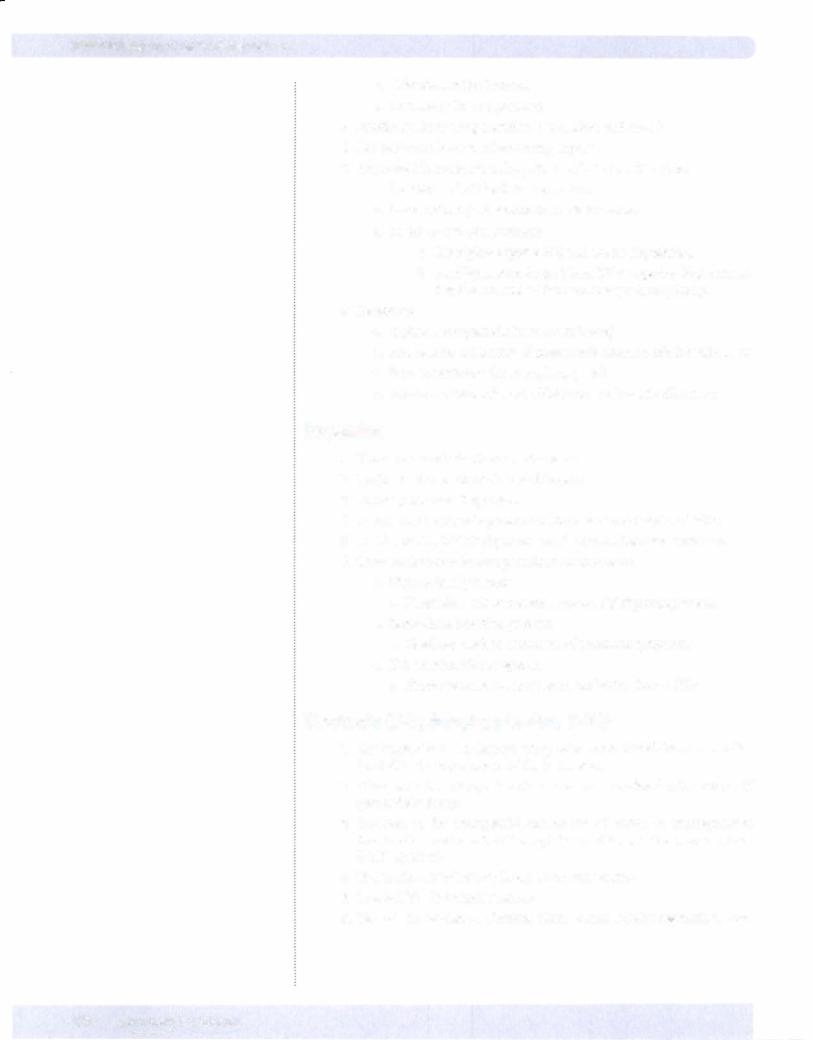
USM LE Step 1 • Behavioral Science
b. Dilatation ofthe bronchi
c.Elevation ofblood pressure
3.Implicated in altering attention, perception, and mood
4.Key pathway: locus ceruleus in upper pons
5.Implicated in monoamine hypothesis of affective disorders:
a.Depletion ofNE leads to depression
b.Excess of NE (and serotonin) leads to mania
c.Based on two observations:
1.Reserpine depletes NE and causes depression.
11.Antidepressant drugs block NE re-uptake, thus increas ing the amount of NE available postsynaptically.
6.Receptors:
a.Alpha- I: sympathetic (vasoconstriction)
b.Alpha-2: on cell bodies ofpresynaptic neurons, inhibit NE release
c.Beta- 1: excitatory for heart, lungs, brain
d.Beta-2: excitatory for vasodilatation and bronchodilatation
Dopamine
1 . The other catecholamine neurotransmitter
2.Synthesized from the amino acid tyrosine
3.D2 receptors most important
4.D1 and D5 stimulate G-protein and increase cAMP and excitation
5.D2, D3, and D4 inhibit G-protein and decrease cAMP and excitation
6.Three pathways ofknown psychiatric importance:
a.Nigrostriatal pathway
•Blockade leads to tremors, muscle rigidity, bradykinesia
b.Meso-limbic-cortico pathway
•Blockade leads to reduction of psychotic symptoms
c.Tuberoinfundibular system
•Blockade leads to increases in prolactin (Dop = PIF)
Serotonin (5-hydroxytryptamine, 5-HT)
1.The transmitter ofa discrete group ofneurons that allhave cell bodies located in the raphe nuclei ofthe brain stem
2.Changes in the activity of serotonin neurons are related to the actions of psychedelic drugs.
3.Involved in the therapeutic mechanism of action of antidepressant treatments (most are 5-HT re-uptake inhibitors; a few new ones are 5-HT agonists)
4.Has inhibitory influence; linked to impulse control
5.Low 5-HT = low impulse control
6.Has role in regulation of mood, sleep, sexual activity, aggression, anxi-
178 MEDICAL
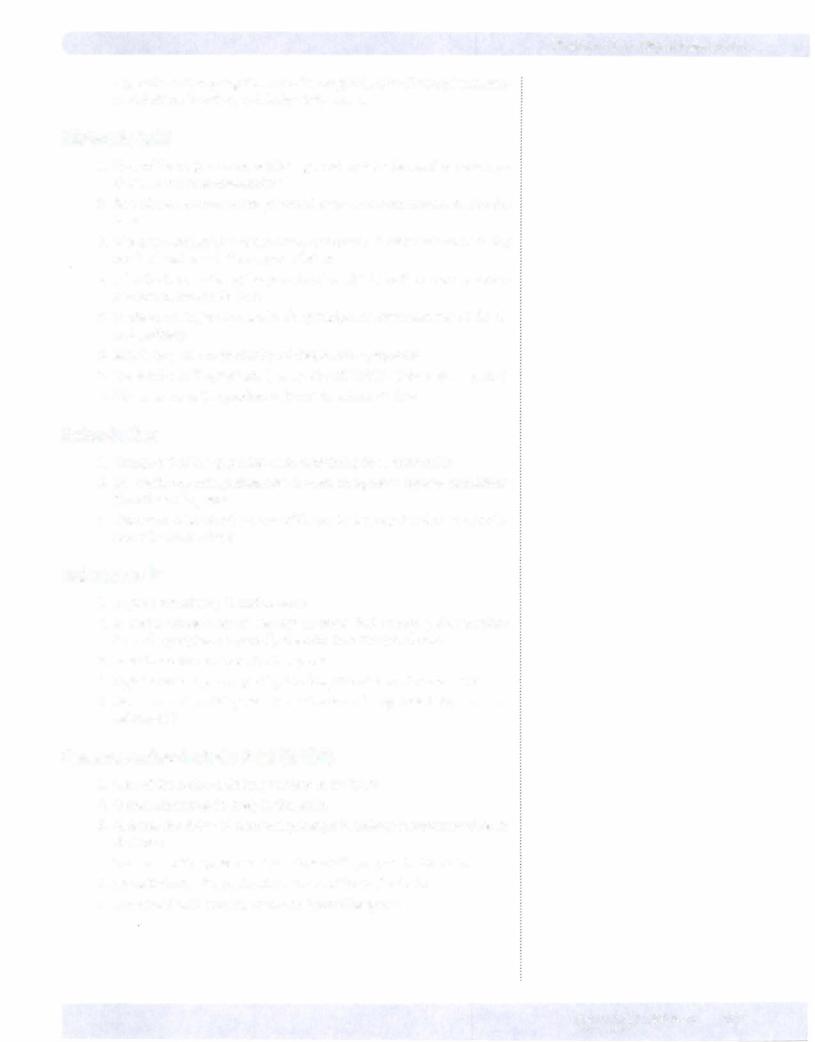
Chapter 13 • Organic Disorders
ety, motor activity, cognitivefunction, appetite, circadianrhythms, neu roendocrine function, and body temperature
Glutamic Acid
1.One ofthe major amino acids in general metabolism and protein syn thesis, also a neurotransmitter
2. Stimulates neurons to fire; principal excitatoryneurotransmitter in the brain
3.The neurotransmitter ofthe major neuronal pathway that connects the cerebral cortex and the corpus striatum
4.Also the transmitter ofthe granule cells, which are the most numerous neurons in the cerebellum
5.Evidence that glutamic acid is the principal neurotransmitter ofthe vi- sual pathway
6.May have a role in producing schizophrenic symptoms
7.Reason for PCP symptoms (antagonistofNMDA glutamate receptors)
8.Glutamate agonists produce seizures in animal studies
Enkephalins
1.Composed oftwo peptides, each containingfive amino acids
2.Normallyoccurring substances that act on opiate receptors, mimicking the effects ofopiates
3.Neurons are localized to areas ofthe brain thatregulatefunctions influ enced byopiate drugs.
Substance P
1 . Peptide containing 1 1 amino acids
2.A major transmitter of sensory neurons that convey pain sensation from the periphery, especially the skin, into the spinal cord
3.Also found in numerous brain regions
4.Opiates relieve pain in part byblocking the release ofsubstance P.
5.New class of antidepressant medications being tested to work on substance P
Gamma Amino-butyric Acid (GABA)
1. One of the amino-acid transmitters in the brain
2.Occurs almost exclusively in the brain
3.Reduces the firing of neurons; principle inhibitory neurotransmitter in thebrain
4.The transmitter present at 25 to 40% ofall synapses in the brain
5.Quantitatively, the predominant transmitter in the brain
6.Associated with anxiety, cannabis, benzodiazepines
MEDICAL 1 79

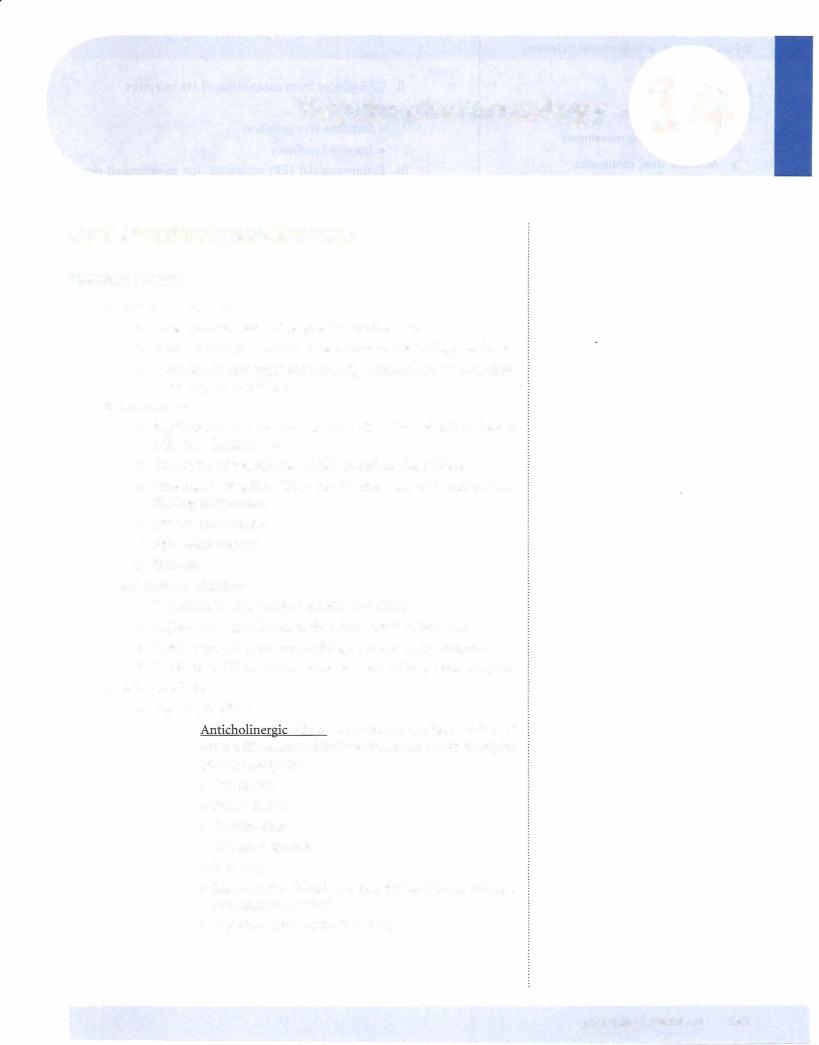

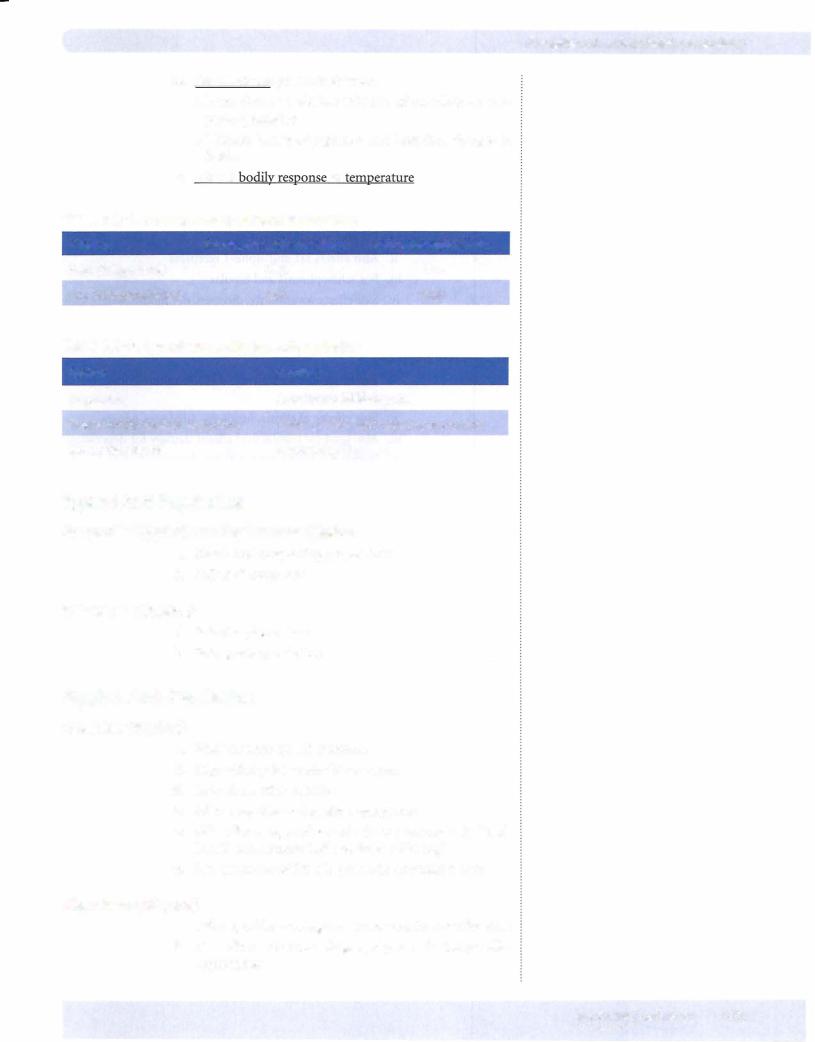

USM LE Step 1 • Behavioral Science
m.Raises prolactin levels, EP effects, highest risk of move ment disorders
Olanzapine (Atypical)
1. Affects positive and negative symptoms, thought disorders ii. Highest incidence of diabetes, iweight, ichol, etc.
Quetiapine (Atypical)
1.D2 and 5-HT2 antagonist
n. Also affects HI and alpha- I receptors ill. For schizophrenia and bipolar
1v. Side effects: somnolence, dizziness, dry mouth, weight gain v. Lowest risk of movement side effects
Aripiprazole (Atypical)
i.Partial agonist on D2 and 5-HTI receptors. Antagonist at 5-HT2 receptor.
n. Side effects: akathisia, headache, tiredness, nausea
m. Also used for bipolar and adjunt therapy for depression 1v. Partial dopamine against at low doses
Ziprasidone (Atypical)
1.High affinity for DA, 5-HT, alpha-adrenergic, and hista- mine receptors
1i. Some inhibition of 5-HT reuptake
m. For acute agitation of psychoses, acute mania
iv.Intramuscular injection
v.Prolongs QT interval
ANTIDEPRESSANTS
General Issues
Common uses
a.Depression
b.Anxiety
c.Chronic pain, with and without depression
Cyclic antidepressants
a.Action: blocking of re-uptake of serotonin and norepinephrine, blocking ofalpha-I adrenergic receptors, and muscarinic receptors.
b.Pharmacokinetics
1.Fat soluble
11.Metabolized by the liver and excreted by the kidneys
m.Requires reaching plasma levels for imipramine, nortrip tyline, desipramine, and amitriptyline for efficacy
184 MEDICAL

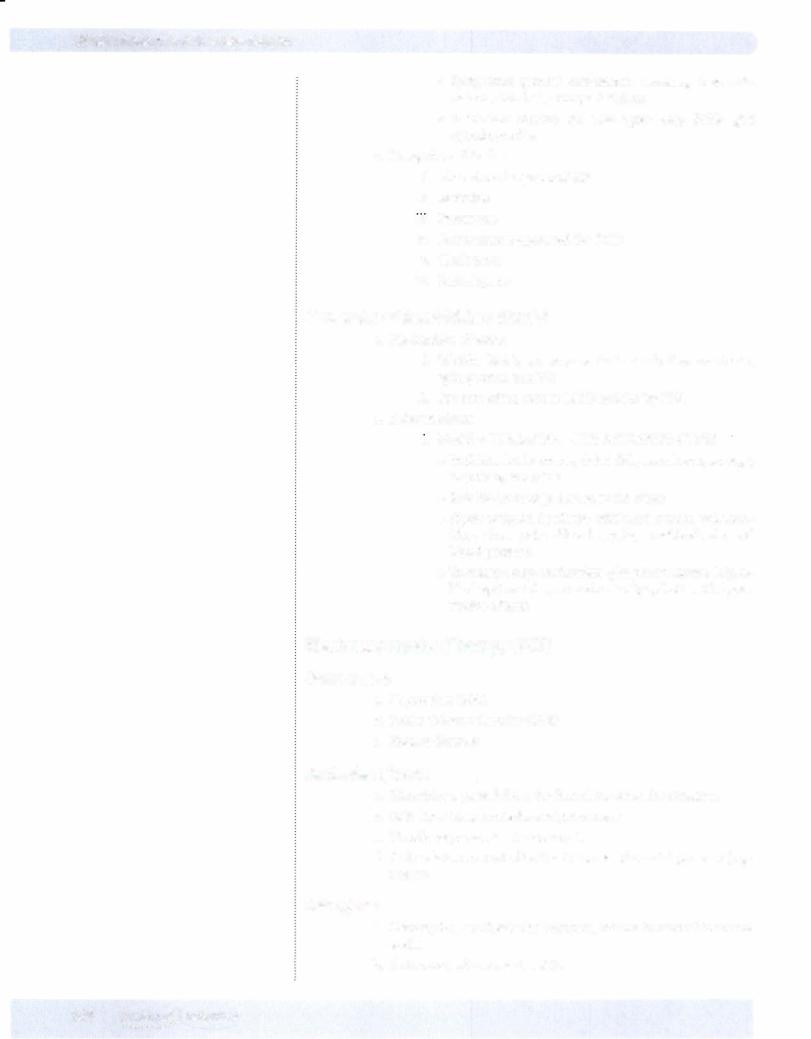
USMLE Step 1 • Behavioral Science
•Symptoms: general restlessness, sweating, insomnia, nausea, diarrhea, cramps, delirium
•Treatment: remove causative agent, stop SSRis, give cyproheptadine
e.Drugs from this class
LFluoxetine: longest half-life n. Sertraline
m.Paroxetine
iv.Fluvoxamine: approved for OCD v. Citalopram
VI. Escitalopram
Monoamine oxidase inhibitors (MAOls) a. Mechanism of action
LInhibits MAO, an enzyme that metabolizes serotonin, epinephrine, and NE
IL For best effect, reduce MAO activity by 80%
b.Adverse effects
i.MAOI + TYRAMINE = HYPERTENSIVE CRISIS
•Problem foods: cheese, dried fish, sauerkraut, sausage, chocolate, avocados
•Safe foods: cottage cheese, some wines
•Signs: occipital headache, stiff neck, nausea and vom iting, chest pain, dilated pupils, nosebleed, elevated blood pressure
•Treatment: stop medication, give phentolamine (alpha blockage) or chlorpromazine (antipsychotic with hypo tensive effects)
Electroconvulsive Therapy (ECT)
Common uses
a.Depression (80%)
b.Schizoaffective disorder (10%)
c.Bipolar disorder
Mechanism ofaction
a.Electricity is passed from the frontal cortex to the striatum.
b.90% show some immediate improvement
c.Usually requires 5 to 10 treatments
d.Only relative contraindication is increased cranial pressure (e.g., tumor)
Side effects
a. Memory loss and headache common, returns to normal in several weeks 
b. Serious complications <1:1,000
186 MEDICAL

Chapter 14 • Psychopharmacology
Other issues
a.Although not usuallyfirst-line treatment, shouldbe considered for:
i.Highly suicidal patients
ii.Depressed pregnant patients
b.Improvement associated with large increase in slow wave (delta) activity in the prefrontal area; greater increase = greaterrecovery
Drugs to Highlight
Trazodone
a.5-HT receptor antagonist, alpha-I blocker
b.Almost no anticholinergic adverse effects
c.Sedating, but effective at improving sleep quality, does not decrease Stage4 sleep
d.May lead to priapism; therefore, sometimes used to treat erectile dysfunction
Mirtazapine
a.Stimulates NE and 5-HT release
b.Blocks 5-HT2 and 5-HT3 receptors
c.Side effects: somnolence (60%), increased appetite,weight gain
Bupropion
a.Weak inhibitor of dopamine, modest effect on NE, no effect on 5-HT reuptake
b.No anticholinergic effect
c.Little cardiac depressant effect
d.Increased risk ofseizures
e.Less sexual effects or weight gain
f.Side effects: appetite suppressant, agitation, insomnia
g.Approved for smoking cessation
Venlafaxlne
a. Inhibits reuptake ofNE and 5-HT, mild dopamine effect (SNRI)
b.Side effects: sweating, nausea, constipation, anorexia, vomiting, somnolence, tremor, impotence
Ouloxetlne
a.Targets 5-HT and NE receptors (SNRI)
b.Side effects: nausea, drymouth, dizziness, constipation, decreased appetite, increased blood pressure
c.Approved for depression andneuropathicpain
MEDICAL 187

USM LE Step 1 • Behavioral Science
MOOD STABILIZERS
Lithium
a.For long-term control and prophylaxis of bipolar disorder, mi graine cluster headaches, chronic aggression; combined with tri cyclics for resistant depression
b.Works for 70% of cases
c.Hypothesized mechanism: blocks inositol- I -phosphate (second messenger)
d.Pharmacokinetics:
i.Quickly absorbed from the gastrointestinal tract, not protein bound or metabolized
11.Requires reaching plasma levels very close to toxic levels for effect, which is reached in 10 to 14 days
111.Must monitor blood levels
•Therapeutic levels: 0.8-1.5 mEq/L
•1.4 mEq/L may be toxic
•Frank toxicity at 2.0; above 2.5 = hemodialysis
IV. Good kidney function and adequate salt and fluid intake essential; 95% excreted in urine
v.Peak serum level: 1-3 hours
vi.Potassium-sparing diuretics have no effects; loop diuret ics result in increased serum levels.
e.Side effects
i.Narrow margin of safety, must monitor blood levels
11.Tremor, thirst, anorexia, gastrointestinal distress com- monly occur at therapeutic levels
m.Seizures and coma
Iv. Polyuria and polydipsia v. Edema
Vl. Acne
VII. Benign leukocytosis Vlll. Hypothyroidism
IX. Nephrotoxic
x.Diabetes insipidus
f.Long-term lithium use has adverse effects on renal function.
g.Compliance often difficult, patient may value manic experiences
h.Teratogenic, produces cardiac malformations (Ebstein anomaly tricuspid valve)
Valproic Acid
a.For acute mania, rapid cycling bipolar disorder, impulse control
b.Mechanism of action: augmentation of GABA in CNS
c.Monitor blood levels
d.Hepatotoxic (liver function impaired)
188 MEDICAL


USMLE Step 1 • Behavioral Science
h.Crosses placenta and accumulates in fetus, withdrawal symptoms in newborn
i.Passed on in breast milk with observable effects
j.Oral contraceptives decrease metabolism ofbenzodiazepines
Table 14-4. Selected Benzodiazepines and Common Uses
Generic Name |
Common Uses |
Faster acting |
|
Alprazolam |
Panic, anxiety |
Diazepam |
Anxiety, insomnia |
Flurazepam |
Insomnia |
Triazolam |
Insomnia |
Longer acting |
|
Chlordiazepoxide |
Alcohol detoxification |
Clonazepam |
Panic, anxiety |
Temazepam |
Insomnia |
Lorazepam |
Anxiety, alcohol-related seizures |
Oxazepam |
Alcohol detoxification |
Buspirone
i. For anxiety
u. No anticonvulsant or muscle-relaxing properties m. Affects serotonin, not GABA
iv. >7 days for effect v. Some sedation
VI. Low abuse potential vu. No withdrawal effects
vlli. Not potentiated by alcohol
190 MEDICAL

Chapter 14 • Psychopharmacology
Review Questions
108. Following his arrest for disturbing the peace, a 35-year-old man is referred for psychiatric evaluation. During the initial interview, he talked rapidly and paced around the room. He reported that he had slept little in the past few days, but that he felt "great". "It's not always like this;' he confided. "Sometimes I just feel so bad I can hardly move." During the most com mon subsequent treatment for this disorder, which of the following side effects would the patient be most likely to experience?
(A)Insomnia
(B)Memory loss
(C) Tardive dyskinesia
(D)Acne
(E)Retarded ejaculation
109.A 36-year-old woman is brought to see her physician by her family. The family reports that over the past year she has had trouble controlling her movements. Symptoms include frequent and discrete brisk movements that cause jerks of the pelvis and limbs as well as facial frowns, grimaces, and smirks. The most likely diagnosis for this patient would be
(A)Pick disease
(B)Wilson disease
(C) Parkinson disease
(D)Huntington disease
(E)Creutzfeldt-Jakob disease
1 10. Over a 5-week period, a previously healthy 55-year-old female has devel oped headaches, progressively severe word-finding difficulty, and confu sion. She speaks incoherently and is unable to follow commands, repeat phrases, or name objects. What is the most likely site of the lesion?
(A)Frontal lobe
(B)Temporal lobe (C) Occipital lobe
(D)Parietal lobe
(E)Cerebellum
1 1 1. Following an automobile ·accident, a 46-year-old male is brought to the hospital suffering from head trauma. Over the next week, his medical record notes the appearance of auditory hallucinations, delusions, thought disorders, and poor verbal comprehension. These symptoms are most con sistent with a lesion in the
(A)frontal lobe
(B)dominant parietal lobe
(C)nondominant parietal lobe
(D)dominant temporal lobe
(E)nondominant temporal lobe
MEDICAL 191
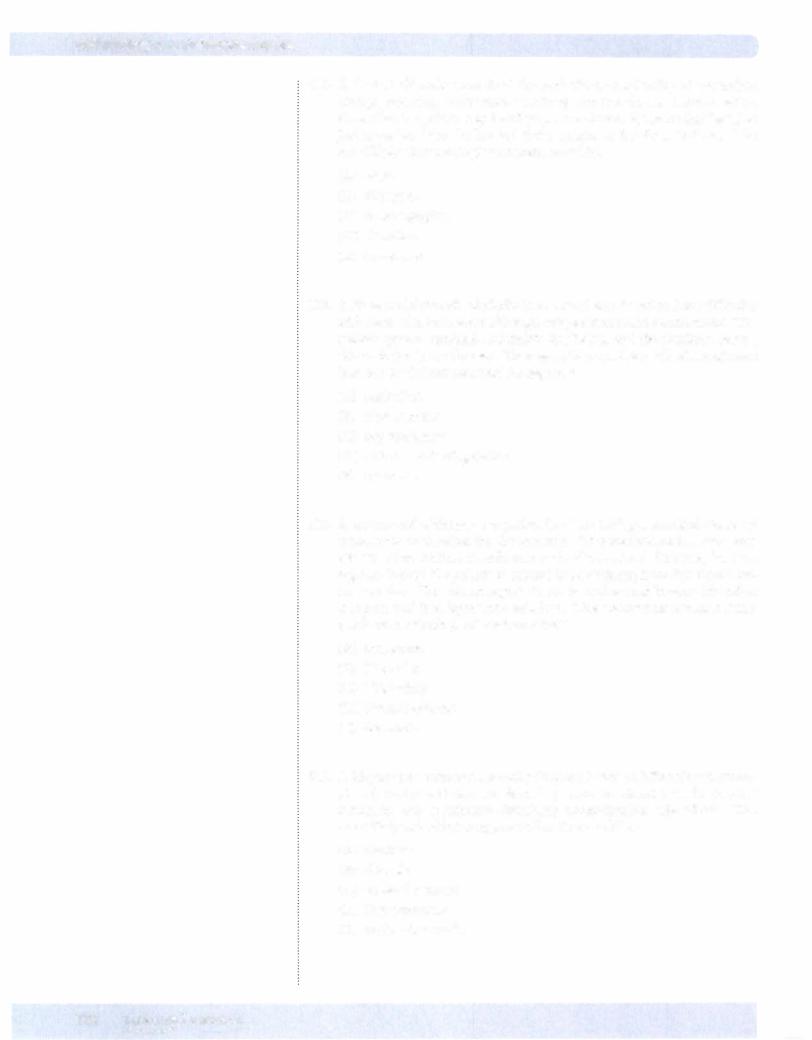
USM LE Step 1 • Behavioral Science
1 12. A 32-year-old male presents at the local clinic complaining of abdominal cramps, sweating, runny nose, vomiting, and muscle aches. Examination shows that his pulse is rapid and pupils are dilated. He states that he "feels just awful" and that he has had these symptoms for about 24 hours. The most likely pharmacologic treatment would be
(A)none
(B)diazepam
(C) carbamazepine
(D)clonidine
(E)trazodone
1 13. A 58-year-old chronic alcoholic is evaluated and found to have difficulty with recall of recent events although long-term memories seem intact. The patient appears confused and insists that he has met the physician before, although this is not the case. These symptoms are the result of a syndrome that can result from neuronal damage to the
(A)cerebellum
(B)hippocampus
(C) hypothalamus
(D)reticular activating system
(E)thalamus
1 14. A 32-year-old schizophrenic patient has been taking a standard course of neuroleptic medication for the past year. This medication has been very effective at controlling his delusions and hallucinations. However, during a regular checkup the patient was found to be suffering from dry mouth and constipation. The patient reports that it is hard to read because his vision is blurry, and then lapses into delirium. These symptoms are most likely produced by blockage of what receptors?
(A)Dopamine
(B)Histamine
(C) Muscarinic
(D)Norepinephrine
(E)Serotonin
1 15. A 24-year-old woman was recently diagnosed with undifferentiated schizo phrenia and placed on a standard drug regimen. About 2 weeks into her treatment, she experiences disturbing extrapyramidal side effects. The most likely side effect to appear at this time would be
(A)akathisia
(B)akinesia
(C)physical tremors
(D)Pisa syndrome
(E)tardive dyskinesia
192 MEDICAL
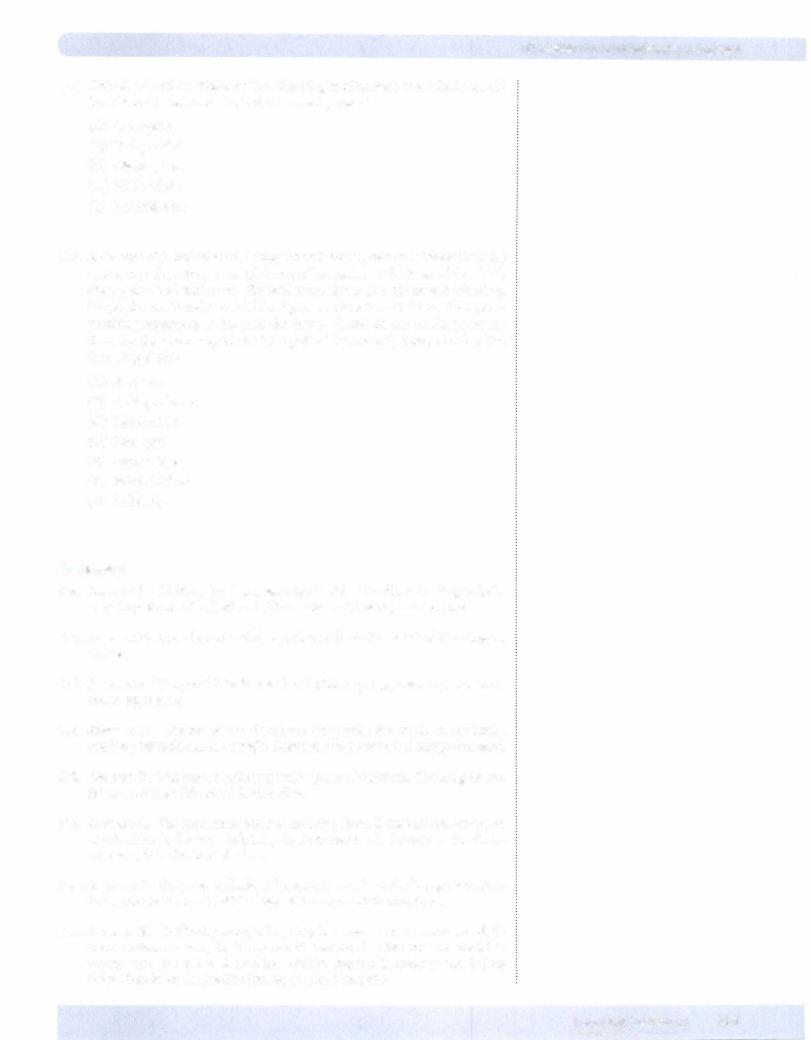
Chapter 14 • |
Psychopharmacology |
1 16. Patients placed on which of the following medications most likely should have blood drawn and checked on a weekly basis?
(A)Clozapine
(B)Haloperidol
(C)Olanzapine
(D)Risperidone
(E)Thioridazine
1 17. A 46-year-old man who was being treated for depression is brought to the emergency department complaining of headache at the base of the skull, chest pains, and stiff neck. Physical exam shows that his nose is bleeding, his pupils are dilated, and his blood pressure is extremely high. He reports vomiting repeatedly in the past few hours. Based on this initial presenta tion, the physician suspects that the patient has recently eaten which of the following foods?
(A)Avocados
(B)Cottage cheese
(C) Hamburger
(D)Raw eggs
(E)French fries
(F)Fried chicken (G) Dried figs
Answers
108.Answer: D. Lithium has been associated with side effects leading to leth argy (hypothyroidism), edema (lithium is a salt), acne, and seizures.
109.Answer: D. Age of onset and description indicate the onset of Huntington chorea.
1 10. Answer: B. Temporal lobe is associated with language, memory, and emo tional expression.
1 1 1. Answer: D. Lesions of the dominant temporal lobe result in euphoria, auditory hallucinations, thought disorder, and poor verbal comprehension.
1 12. Answer: D. The man is suffering from opiate withdrawal. The drug on the list to treat the withdrawal is clonidine.
1 13. Answer: E. The man most likely is suffering from Korsakoff syndrome, in which chronic thiamin deficiency leads to neuronal damage in the thala mus as well as the frontal lobes.
1 14. Answer: C. The patient displays the symptoms of anticholinergic intoxica tion. This is the result ofblockage of the muscarinic receptors.
1 15. Answer: B. Difficulty completing simple movements or common skills occurs relatively early in the course of treatment. Tremors and akathisia appear after about 1 to 2 months. Tardive dyskinesia rarely occurs before the patient is on the medication for at least 3 months.
MEDICAL 193
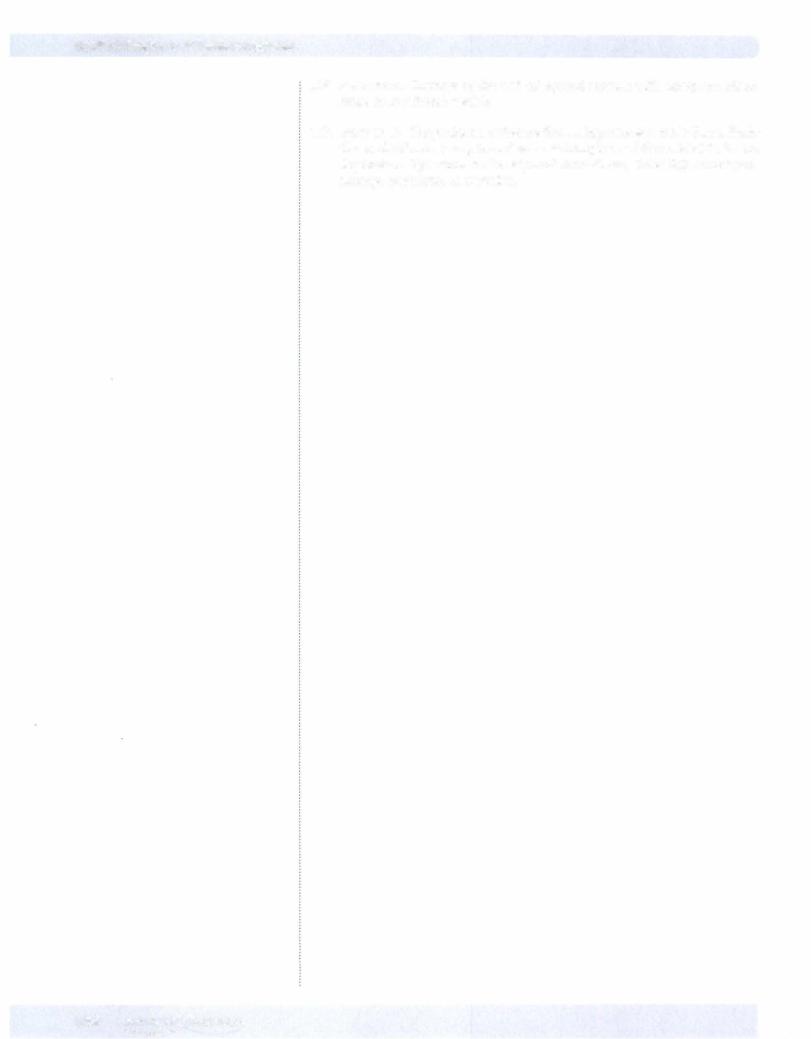
USM LE Step 1 • Behavioral Science
1 16. Answer: A. Because of the risk of agranulocytosis with clozapine, blood must be monitored weekly.
117.Answer: A. The patient is suffering from a hypertensive crisis that is likely the result of consuming tyramine-containing food while on MAOis for his depression. Tyramine can be acquired from cheese, dried fish, sauerkraut, sausage, chocolate, or avocados.
194 MEDICAL
